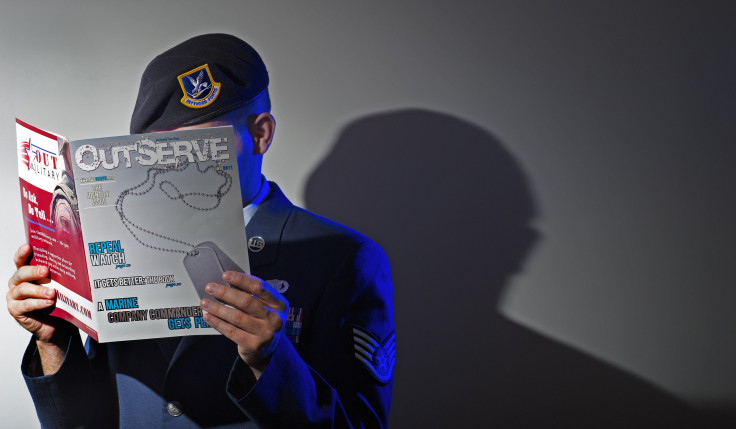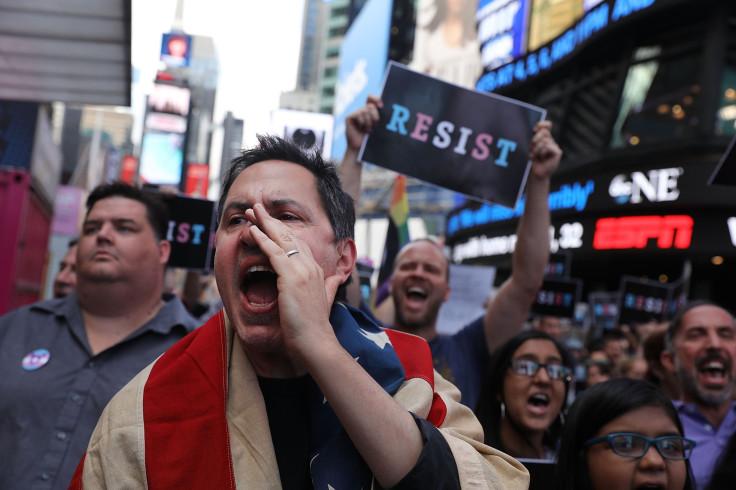History Of Transgender Troops Serving In US Military Before Trump’s Ban

Sparking outrage from the LGBT community, President Donald Trump announced Wednesday transgender people would be banned from serving in the military. He said the move would curtail the "tremendous medical costs" incurred on the gender-transition surgeries that the transgender people serving in the military go through.
However, a 2016 RAND study underlines “the costs of gender transition–related health care treatment are relatively low," and the "previous integration efforts and the experiences of foreign militaries indicate a minimal likely Impact on force readiness." Medical care for the transgender people serving in the military add up to $8.4 million, which is a little more than 0.1 percent of the total medical expenses that the military foots for its troops in a year.
Based on the study, the Department of Defense, under the administration of former President Barack Obama, lifted the ban on transgender serving in the military. Following the decision, transgender troops were also eligible to get government funds for any treatment deemed medically necessary by their doctors, including surgery and hormone therapy.

Read: Laverne Cox, Caitlyn Jenner And Other LGBTQ Celebrities On Trump's Transgender Military Ban
In 2011, Obama revoked the “Don’t Ask Don’t Tell” policy, a discriminatory program initiated by the administration of former President Bill Clinton back in 1994. The policy mandated the transgender individuals could serve in the military as long as their supervisors did not find out their sexual orientation and the recruits did not accidentally reveal it.
Instances of the transgender troops successfully serving in the military — albeit not openly — date back to the days of the American Civil War (1861-65). One such example was Albert Cashier, a transgender man who fought in the Civil War with the 95th Illinois Regiment. "As a young private, Cashier had fought at the siege of Vicksburg, where he and his comrades broke the spine of the Confederacy, and his name was inscribed on the Illinois victory monument there," wrote the New York Times.
In the 20th century, Netherlands became the first country to allow people from the LGBT community to serve in the army. Several other countries followed the suit such as Australia, Austria, Belgium, Bolivia, Canada, the Czech Republic, Denmark, Estonia, Finland, France, Germany, Israel, New Zealand, Norway, Spain, Sweden and the United Kingdom. Some other countries, such as Cuba and Thailand, allow transgender service in a limited capacity, according to reports.
The RAND study estimated between 1,320 and 6,630 transgender service members serve actively in the U.S. military, while between 830 and 4,160 members are in reserves duty. According to a 2014 research paper published by the Williams Institute, an estimated 134,300 transgender individuals are veterans or are retired from Guard or Reserve service. The Williams Institute is a think tank at the University of California, Los Angeles.
"It’s a consistent finding in studies that have been done across a variety of different data sources that trans people serve in the military at higher rates than the general population," said Jody L. Herman, a co-author of the research paper.
Read: Trump's Transgender Military Ban Prompts Right Wing Twitter Reactions
Since the White House has refrained from commenting on the details of the ban, there is no way of knowing if the transgender troops already serving for their nation would be forced to quit.
Curiously, in an interview he gave before he announced his run for presidency, Trump said there was no excuse for keeping transgender people from serving in the military. “If a gay person can be a doctor or a lawyer or a teacher or take another position of responsibility, why can't they serve this country in the military? 'Don't ask, don't tell' has clearly failed. Gay people serve effectively in the military in a number of European countries," he told pro-LGBT magazine The Advocate in 1999.
© Copyright IBTimes 2025. All rights reserved.






















